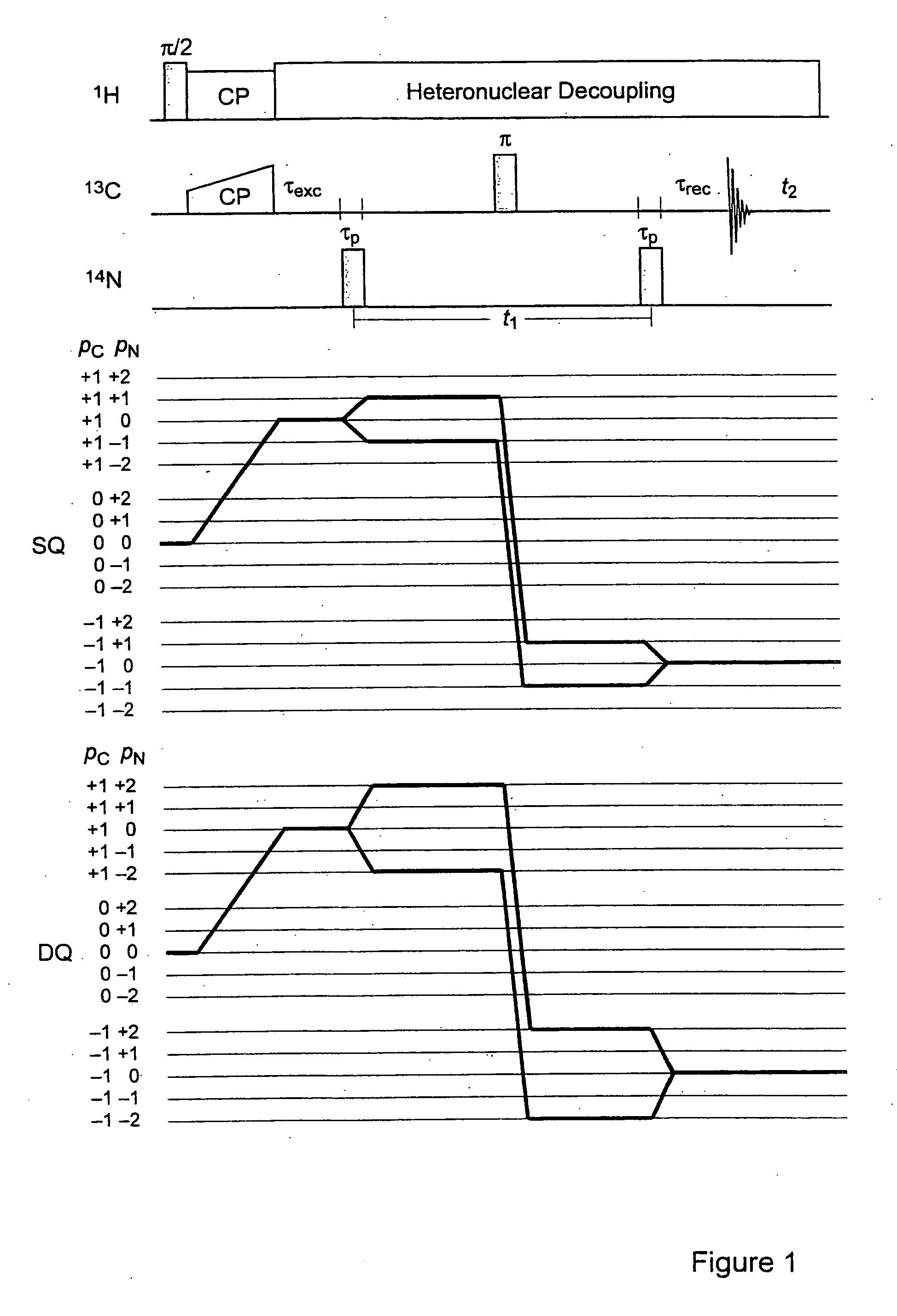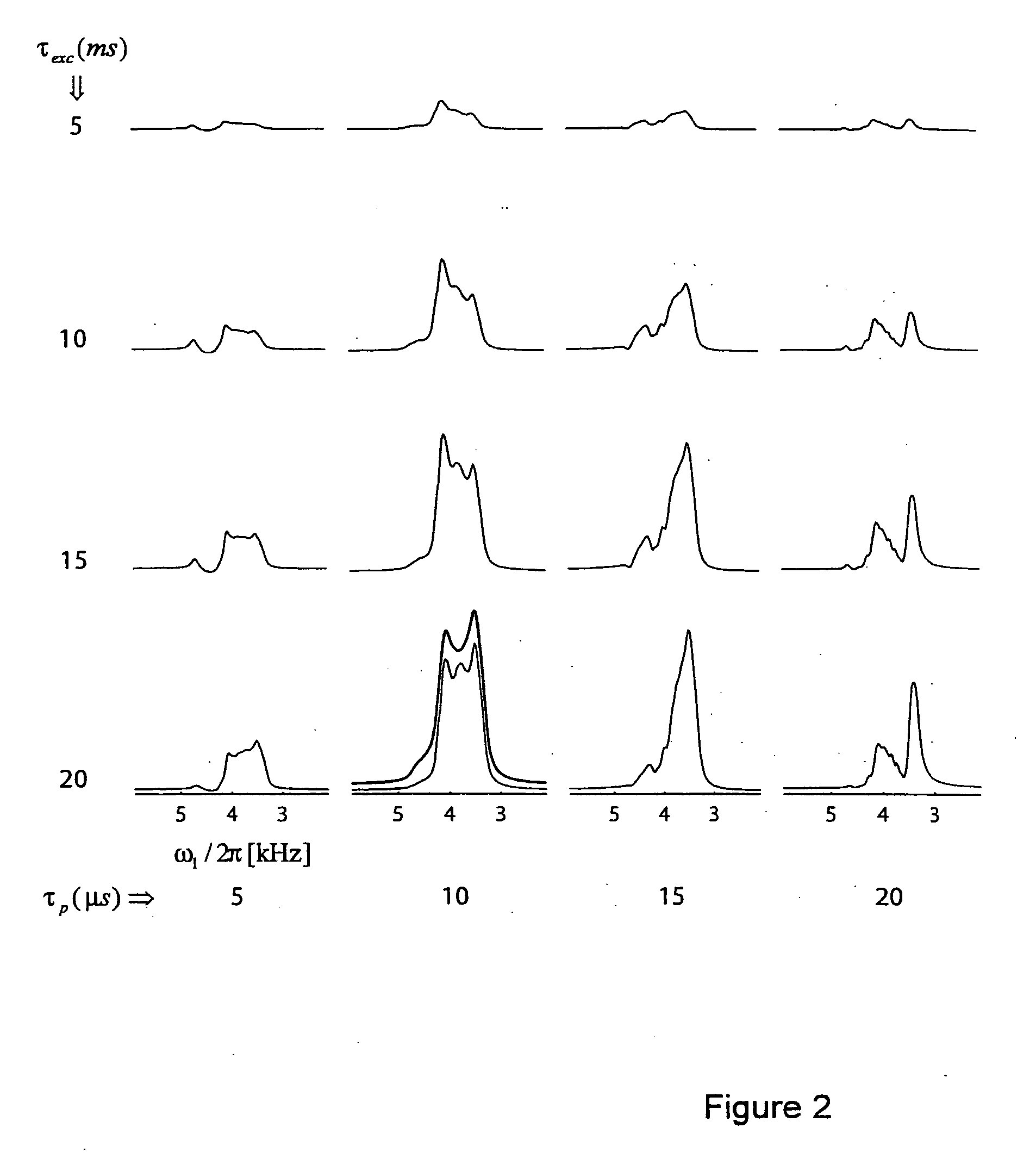Quadrupolar nuclei NMR using residual dipolar splittings in solids
a technology of residual dipolar splitting and quadrupolar nuclei, which is applied in the direction of magnetic measurement, instruments, measurement devices, etc., can solve the problem of difficult to recognize the singularities of powder patterns, and achieve the effect of improving spectra
- Summary
- Abstract
- Description
- Claims
- Application Information
AI Technical Summary
Benefits of technology
Problems solved by technology
Method used
Image
Examples
Embodiment Construction
[0047] The method presented in this work exploits residual dipolar splittings between 14N (I=1) and a “spy” nucleus with S=½ such as 13C, in combination with scalar J couplings. The residual splitting D(14N, 13C), which decreases in inverse proportion to the static field strength B0, is on the order of D≈30 Hz for 14NH3+13CαHRCOO− in zwitterionic amino acids at B0=9.4 T (400 MHz for protons), while J(14N, 13C) couplings in L-alanine are about 3.1 and 4.0 Hz for 14NH3+R and 14NH2R respectively, and around 8 Hz in peptide bonds.[37] If the magic angle is adjusted very accurately,[38] and if proton decoupling is optimized,[39, 40] the 13Cα lines of amino acids can be as narrow as 18 Hz, so that the residual dipolar splitting can readily be observed.[38] Even when the splittings are masked by inhomogeneous broadening, due to slight errors in the adjustment of the magic angle, temperature gradients, or magnetic susceptibility effects, the residual dipolar splittings can still be exploite...
PUM
 Login to View More
Login to View More Abstract
Description
Claims
Application Information
 Login to View More
Login to View More - R&D
- Intellectual Property
- Life Sciences
- Materials
- Tech Scout
- Unparalleled Data Quality
- Higher Quality Content
- 60% Fewer Hallucinations
Browse by: Latest US Patents, China's latest patents, Technical Efficacy Thesaurus, Application Domain, Technology Topic, Popular Technical Reports.
© 2025 PatSnap. All rights reserved.Legal|Privacy policy|Modern Slavery Act Transparency Statement|Sitemap|About US| Contact US: help@patsnap.com



